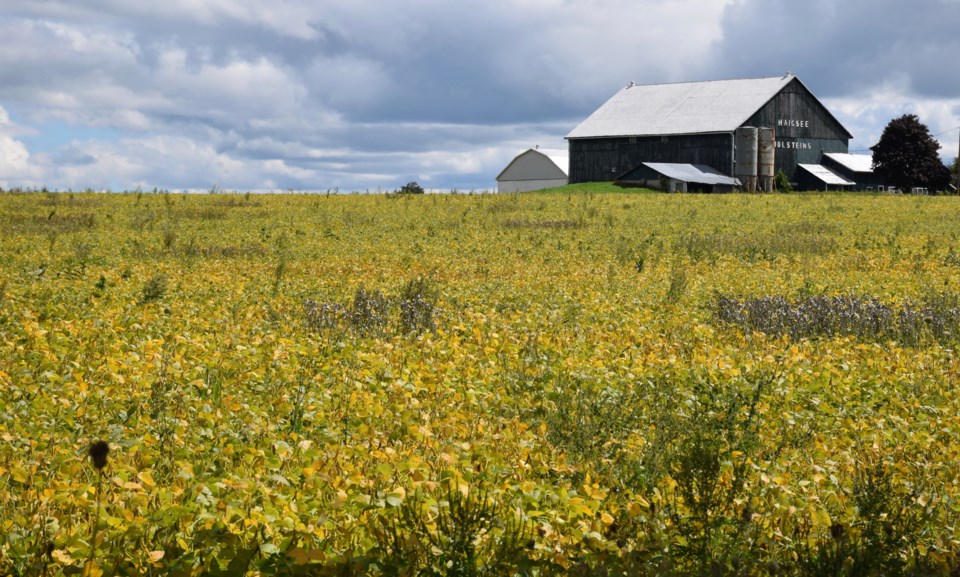Farmers who grow soybeans, organic produce or vegetables will be eligible for coverage in this year’s crop insurance program, which will see coverage and premiums per acre decrease slightly from last year.
For 2020, insurable regions for soybeans are expanding to the entire province; most growth has been in the southeast. Coverage will be based on soybean producers’ individual insured history instead of the regional average. Their experience discount or surcharge will be applied to premiums for soybean crops. These producers will also have access to irrigation coverage.
Changes to the program were announced on Feb. 25 in Melville.
“These changes for 2020 will help ensure crop insurance meets the risk management needs of our evolving agriculture industry … ,” David Marit, minister of agriculture, said during the announcement. “Soybeans have become a successful crop in Saskatchewan.”
Saskatchewan Crop Insurance Corporation (SCIC) has worked with farmers since 2010 to gather information on soybean production and producers’ needs.
“Globally, if we want to keep competitive, we have to look at new crop varieties,” Marit said, “and this is one thing we are bringing in.”
Saskatchewan producers will continue to have access to high coverage while seeing a decrease in premiums. On average, crop insurance coverage will decrease to $224 per acre from $230 per acre; this year’s coverage will still be the second-highest ever provided. Meanwhile, premiums will see a decease to an average of $7.40 per acre from $8.61 per acre.
March 31 is the deadline to select insured crops and coverage levels or make additional changes to crop insurance contracts.
Another notable change to the program is producers now have up to seven years to rejoin the program to continue with their previous premium discount/surcharge and yields.
Working with the Saskatchewan Vegetable Growers’ Association, SCIC is enhancing the vegetable acreage loss insurance program, Marit continued. The insured value of vegetable crops will be updated to better reflect production costs. SCIC is also extending the fall cut-off dates to allow for a longer growing season before harvest begins.
Asparagus is also being added as an eligible crop.
There has been major growth in the organics industry, Marit said. Therefore, SCIC is changing its approach to organics to ensure it remains relevant to producers.
Premiums and coverage will be updated using information from customers. Organic-insured prices will be higher and premiums will be lower. Average coverage will also be lower and will be realigned to the current organic risk.
Producers faced several challenges in 2019, including dry conditions during the growing season and wet conditions — including an early snowfall — that delayed harvest, said Marit.
These adverse conditions affected producers’ yields and quality. It also led to about 1.3 million insured acres (520,000 hectares) — the majority in central Saskatchewan — being left in the field over the winter, which means about $350 million in compensation claims will be paid out.
Crops left out are covered under the SCIC’s wildlife damage compensation program. This program is available to all producers and crop insurance participation is not required. If producers notice any wildlife damage, they should contact SCIC quickly so the damaged crops can be assessed.
Livestock producers are also reminded that, under the western livestock price insurance program, calf price insurance policies are now available to purchase. Feeder and feed price insurance policies are available year-round, while the deadline for to purchase calf price insurance is May 28.
Many of these changes were in the works before last year’s growing season, said Marit. SCIC acquired data during the last few years and ensured it still meets the needs of producers. It has also done a good job to consult with industry leaders on the changes being considered.
Farmers submitted some claims last year for damage that flea beetles caused, said Shawn Jaques, president/CEO of SCIC. Flea beetles are normally seen during the spring, so producers have an insured establishment benefit to cover those pests. This benefit will also cover anything that farmers can’t control, such as weather, pests and disease.
During the last few years, 75 to 78 per cent of all acres in the province have been insured, he continued. There could be additional crops insured this year and more customers who sign up.
Will Oddie, president of SaskOrganics, praised the move to include organic farmers in this year’s crop insurance coverage.
“SCIC has now amassed enough data to form a sound system, so it will affect people (positively) in a number of (ways),” he said.
Prices were previously based on several factors, including guesses. Now they will reflect true organic yields and true prices based on that data, which shows how well the industry has matured, Oddie added.
Aaron Gray, chair of the Saskatchewan Irrigation Projects Association, was also encouraged with the program’s enhancements. Such changes will help the industry reach its potential, especially since the province’s 10-year growth strategy envisions expanding irrigation to 85,000 acres (34,000 hectares).
“Enhanced irrigation coverage has been absolutely favourable to farmers … (and) adding soybeans has been fantastic because it is a good complement crop for rotation,” he said.
For information about the 2020 insurance options, call 1-888-935-0000 or visit www.scic.ca.




